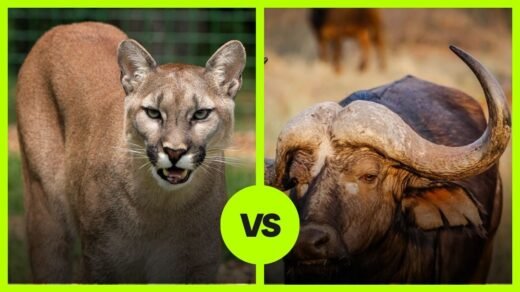The animal world is full of fascinating matchups, and the duel between a spotted hyena and a chimpanzee is no exception. While they inhabit different realms of the African continent—the hyena roaming the open savannas and the chimp nestled in the forests—both are known for their intelligence, social structure, and unique hunting tactics. This makes for a compelling hypothetical showdown between brains and brawn. Let’s dive into the specifics to understand the fighting capabilities, physical attributes, and survival strategies of these two remarkable animals.
The Contestants Unveiled
Spotted Hyena: The Cunning Scavenger and Predator
The spotted hyena, usually weighing between 90 and 190 pounds, is a predator and scavenger known for its cunning and social coordination. Its jaws are its primary weapon, strong enough to crush bones, and it boasts surprising stamina, capable of running long distances to exhaust its prey.
Chimpanzee: The Forest Intellectual
A chimpanzee is much smaller, generally weighing between 70 and 130 pounds. However, what it lacks in size and brute strength, it makes up for in intelligence and dexterity. Chimpanzees are known to use tools and have complex social interactions. Their arms are powerful, capable of brachiating through trees, and they possess strong bites as well.
Physical Attributes: Jaws vs. Arms
Spotted Hyena’s Bite and Endurance
The hyena’s jaw is one of the most powerful in the animal kingdom and is built to rip through flesh and bone. Its robust body and surprising stamina make it a formidable adversary over long distances.
Chimpanzee’s Dexterity and Bite
Chimpanzees are agile and can use their arms for various tasks, including climbing and manipulating objects. They are known for their intelligence and can strategize well in conflict situations. Their bite is also strong, albeit not as devastating as a hyena’s.
Fighting Strategies: Clever Tactics vs. Social Coordination
Hyena’s Scavenging and Teamwork
Spotted hyenas are versatile in combat. They can fight individually but excel when hunting in packs, showcasing exceptional teamwork that allows them to bring down much larger foes.

Spotted Hyena Hunting Behavior
Prey Selection
- Diverse Diet: Spotted hyenas primarily prey on large ungulates such as wildebeest, zebra, and various antelope species. They are also known to hunt smaller animals and even fish and birds when available.
- Scavenging and Hunting: While often labeled as scavengers, they are proficient hunters. Their diet is a mix of scavenged meals and freshly killed prey.
Hunting Strategies and Group Dynamics
- Pack Hunting: One of the most remarkable aspects of hyena hunting is their pack behavior. Hyenas often hunt in groups, which allows them to take down larger and stronger animals than they could handle individually.
- Roles in Hunting Pack:
- Chasers: These hyenas initiate the hunt, often identifying and singling out weak or young prey.
- Flankers: Positioned at the sides, they help steer the prey and block potential escape routes.
- Finishers: Usually the strongest members, they move in to make the kill once the prey is exhausted.
Communication and Coordination
- Vocalizations: Spotted hyenas use a variety of sounds to communicate during the hunt, coordinating their movements and strategies.
- Efficient Cooperation: Their ability to work together efficiently makes them one of the most successful predators in their ecosystem.
Stamina and Endurance
- Pursuit Predators: Unlike big cats that rely on short, powerful bursts of speed, hyenas can pursue their prey over long distances, tiring them out before moving in for the kill.
Social Hierarchy and Feeding
- Matriarchal Society: Spotted hyena clans are matriarchal, and females are generally larger and more dominant than males.
- Feeding Order: After a successful hunt, the dominant females and their young usually feed first, followed by lower-ranking clan members.
Adaptability in Hunting
- Versatility: Hyenas can hunt in a variety of environments, from open savannas to more wooded areas, showing great adaptability in their hunting tactics.
In-Depth Look at Chimpanzee Hunting Behavior
Prey Selection
- Primary Targets: Chimpanzees mainly prey on smaller mammals, with a particular preference for colobus monkeys. They also hunt bush babies, small antelopes, and occasionally other small primates.
- Opportunistic Hunting: While they primarily consume fruits and plants, chimpanzees are opportunistic when it comes to hunting, often seizing the chance to catch prey when the opportunity arises.

Hunting Strategies and Group Dynamics
- Coordinated Hunts: When hunting, especially for colobus monkeys, chimpanzees exhibit highly coordinated behavior. They work as a team, with each member playing a specific role.
- Roles in Hunting Party:
- Drivers: These chimpanzees chase and herd the prey in a specific direction.
- Blockers: Positioned strategically, they prevent the prey from changing course.
- Ambushers: They hide and wait to ambush the prey as it is driven towards them.
- Chasers: Active pursuers who eventually make the kill.
Success Rate and Sharing
- Variable Success: The success rate of these hunts varies, but teamwork significantly increases their chances of capturing prey.
- Meat Sharing: Post-hunt, the meat is often shared among the group members, with higher-ranking individuals and those involved in the hunt receiving larger shares. This sharing strengthens social bonds and can be seen as a form of political maneuvering.
Tool Use in Hunting
- Limited Tool Use: While chimpanzees are known for their tool use, this is primarily seen in foraging, such as using sticks to extract termites or rocks to crack nuts. Their hunting is less reliant on tools and more on physical agility and cooperation.
Impact of Hunting on Social Structure
- Reinforcing Hierarchies: Successful hunters, especially males, often gain social status within the group. Hunting prowess can influence mating opportunities and hierarchical position.
- Learning and Teaching: Young chimpanzees learn hunting skills by observing and participating with adults, indicating a complex social learning process.
Implications for Hypothetical Confrontation with Spotted Hyenas
- Teamwork vs. Individual Strength: In a confrontation, a lone chimpanzee would be at a disadvantage against a hyena. However, if a group of chimpanzees employs their coordinated hunting tactics, they could pose a significant challenge.
- Environment as a Factor: The dense forest habitat of chimpanzees provides them with strategic advantages, such as the ability to set up ambushes and use the vertical space to their advantage.
Conclusion: A Fight of Wits and Power
Given their respective strengths and weaknesses, this battle could go multiple ways depending on various factors such as the environment and initial engagement.
Odds of Winning:
- Spotted Hyena: 70%
- Chimpanzee: 30%
The spotted hyena has the edge in this matchup, primarily due to its powerful jaw, robust physique, and greater experience in killing larger animals. However, the chimpanzee’s intelligence, agility, and potential use of tools provide it with a fighting chance, albeit a slim one.
If you found our exploration of the Spotted Hyena vs. Chimpanzee encounter intriguing, our website offers a plethora of fascinating animal comparisons that delve into the hypothetical showdowns of nature’s most interesting creatures. For another gripping read, don’t miss the strategic face-off between endurance and stealth in Buffalo vs. Spotted Hyena: A Battle of Brawn and Teamwork. If you’re interested in primate power dynamics, Baboon vs. Gorilla: A Primate Duel of Strength and Intelligence will surely capture your attention. For those fascinated by big cat prowess, Leopard vs. Black Bear: The Lone Ranger vs. The Laughing Bandit offers a unique perspective on these formidable predators. And for a twist on classic matchups, check out Tiger vs. Komodo Dragon: A Battle Between Predators of Different Realms. Each article is a deep dive into the hypothetical battles of nature, blending scientific insights with a touch of imagination to satiate your curiosity about the animal kingdom.”




